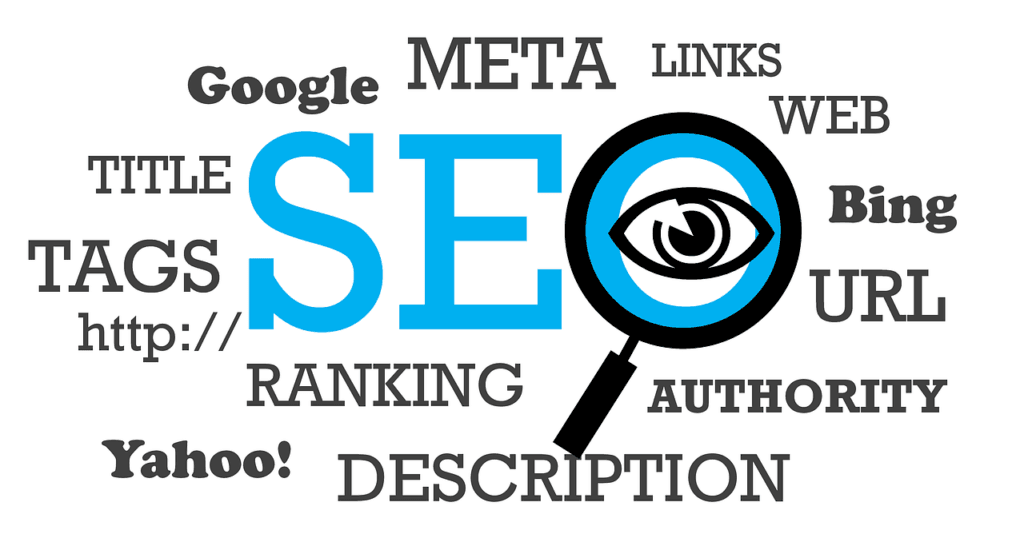This Article has been revised, edited and added to, by Poulomi Chakraborty.
- Structured Data – The Unseen Backbone
- Defining Structured Data
- The Genesis and Evolution
- Structured Data and SEO: An Inseparable Duo
- Bridging the User and the Content
- Structured Data in the Financial Ecosystem
- Types of Structured Data for Financial Websites
- RDFa
- Embracing a Data-First Strategy
- Crafting a Compelling Narrative Through Data
- Implementing Structured Data: A Strategic Approach
- Structured Data as a Strategic Asset
- Schema Markup – The Detailing Brush
- Understanding Schema Markup
- The Genesis of Schema Markup
- Implementing Schema Markup in Financial Websites
- Benefits of Schema Markup for Financial Websites
- Harnessing Schema Markup for Enhanced Visibility
- Strategic Implementation of Schema Markup
- Advanced Strategies for Schema Markup
- Mastering Schema Markup for Financial Success
- The Hands-on Guide to Implementation
- Preliminary Steps: Groundwork for Implementation
- Structured Data Implementation: Step-by-Step
- Leveraging Tools and Platforms
- Challenges and Solutions
- Crafting Your Structured Data Blueprint
- Strategic Implementation for Maximum Impact
- Monitoring, Testing, and Refinement
- A Proactive Approach to Structured Data
- Conclusion: Harnessing the Future
In the vivid, ever-evolving tapestry of the digital realm, standing distinct and resonantly is no easy feat, especially for financial websites teeming in a sea of abundant information. Yet, there exists a robust mechanism, almost akin to learning a new dialect, that can undeniably amplify the eloquence of your website’s language in the crowded digital space – structured data and schema markup.
As we stand at the threshold of this detailed excursion, it is crucial to underline the transformative potential structured data and schema markup harbor, especially for financial websites. This narrative promises to be a vigilant guide, steering you through the labyrinth of schema markup intricacies, unveiling strategies finely tuned to the specifics of the financial sector.
The landscape of structured data is rich and multifaceted, holding the keys to enhancing your website’s visibility while dramatically enriching the user experience. Our journey will glide through foundational concepts, maneuvering the strategic pathways, all while unveiling the tools and resources indispensable in mastering this domain.
Structured Data – The Unseen Backbone

In the midst of the digital cosmos, structured data stands as the unsung hero, a powerful force orchestrating a symphony of coherency, and the guiding hand leading users to a treasure trove of relevant and precisely tailored information. But what exactly is this unseen backbone that holds the potential to transfigure the face of financial websites?
Defining Structured Data
Structured data, a term often echoed in the realms of SEO and digital marketing, refers to any data organized in a manner facilitating its easy retrieval through search engines. It is the meticulous arrangement of the data in a patterned format, thereby creating a framework that helps search engines understand the content in depth, and serve users with the most relevant results.
The Genesis and Evolution
Tracing the roots of structured data, we journey back to a time when the World Wide Web was relatively new. The data then was largely unstructured, and with the burgeoning information, the need for a structured pathway became eminent. This led to the birth of a structured data format, providing a framework that promised not just coherence but a richer, more insightful user experience.
As we tread through its evolutionary pathway, structured data has embraced more sophisticated structures, aligning with the dynamic SEO landscape, thus promising financial websites a vibrant canvas to portray a rich narrative, deeply intertwined with the specifics of the sector.
Structured Data and SEO: An Inseparable Duo
In the SEO cosmos, structured data emerges as a force multiplier, an entity fostering visibility and offering a deep insight into the user’s intent. Its role in SEO is akin to a lighthouse guiding ships through tumultuous seas, providing clarity and direction in the vibrant and often chaotic digital landscape.
For financial websites, leveraging this potential means not only enhanced visibility but also a rich, user-centric narrative that promises engagement and resonates with authenticity. Structured data beckons as a pathway to forging a strong digital imprint, guided by insights and propelled by strategic narratives.
Bridging the User and the Content
As we stand at the juncture where the user meets the content, structured data emerges as the bridge, the facilitator of a dialogue that is both engaging and insightful. It fosters a landscape where content is not just seen but experienced, crafting narratives that are rich, vibrant, and resonate with a deep understanding of the financial landscape.
Structured Data in the Financial Ecosystem
As we forge deeper into this exploration, it becomes imperative to understand the nuanced role structured data plays in the bespoke landscape of financial websites. It isn’t just about organizing data systematically; it’s about fostering a landscape that is insightful, navigable, and rich with potential.
Rich Snippets and Enhanced SERPs
In the ever-competitive realm of financial services, capturing user attention is of paramount importance. Structured data paves the way for rich snippets, which enhance the SERPs by providing a snapshot of the content directly on the search results page, thus potentially increasing the click-through rates and fostering greater engagement.
Boosting Organic Visibility
By facilitating a deeper understanding of the webpage content for search engines, structured data augments organic visibility. For financial websites, this becomes a conduit to showcase credibility through meticulously structured information, promoting a higher chance of ranking on the top spots in SERPs.
Semantic Search and Voice Search Optimization
As we venture into the era of semantic and voice searches, structured data stands as a beacon of progression, aiding in optimizing websites for these modern search paradigms. Financial websites utilizing structured data effectively can hence cater to a broad spectrum of search methods, enhancing accessibility and user experience manifold.
Types of Structured Data for Financial Websites
Structured data operates in a realm brimming with potential, offering a variety of formats each harboring its own set of benefits. As we navigate this segment, let’s unravel the most pivotal ones suitable for financial websites:
JSON-LD
A format favored by Google, JSON-LD allows the integration of structured data script into the HTML of the webpage, without interfering with the user-facing content. It stands as a potent tool for financial websites to impart a structured narrative without disrupting the existing content flow.
Microdata
An approach that involves integrating structured data within the HTML content, microdata offers a pathway to structure content in a way that’s insightful and SEO-friendly, promising a rich narrative grounded in relevance and detailed insight.
RDFa
Yet another mechanism to integrate structured data, RDFa caters to HTML5 platforms, promising a rich terrain where content narratives are not just crafted but sculpted with depth, resonance, and a keen understanding of the financial landscape.
Embracing a Data-First Strategy
In the realm of financial websites, where the competition is fierce and the audience’s trust is paramount, adopting a data-first strategy is not just advisable, it’s imperative. Structured data, the architecture beneath the digital surface, offers a beacon of clarity in a sea of information. For startup founders, understanding and implementing structured data is akin to mastering the art of digital storytelling. It’s about transforming raw data into a compelling narrative that not only educates but also engages and retains the audience.
Crafting a Compelling Narrative Through Data
The Art of Semantic Storytelling
Semantic storytelling goes beyond mere content creation; it involves structuring your content so that it is inherently understood by search engines and, by extension, your target audience. This means leveraging the nuances of structured data to highlight the core services, products, and values that your financial startup offers. It’s about ensuring that when a potential customer queries a search engine, the results returned serve as a direct reflection of what your website, and consequently your business, stands for.
Utilizing Structured Data for Competitive Intelligence
In the financial sector, where every piece of information can be a pivotal point of differentiation, structured data offers a unique advantage. By analyzing the structured data implementations of your competitors, you can glean insights into their SEO strategies, understand their target audience better, and identify gaps in your own content strategy. This process, known as competitive intelligence, is crucial for startups aiming to carve out their niche in the crowded financial marketplace.
Implementing Structured Data: A Strategic Approach
Identifying Core Financial Narratives
Start by identifying the core narratives that define your financial startup. Whether it’s your innovative approach to personal finance management, your cutting-edge investment tools, or your commitment to financial literacy, these narratives should be the cornerstone of your structured data strategy. Use these narratives to guide the selection of schemas (like FAQPage, FinancialProduct, or Offer) that best represent your services and products to both search engines and potential customers.
Tailoring Structured Data to User Intent
Understanding and aligning with user intent is crucial in the digital age, more so for financial startups where trust and credibility are paramount. When implementing structured data, ask yourself: What information is a potential customer looking for? How can I make that information easily accessible and understandable? By tailoring your structured data to meet these user intents, you not only improve your website’s SEO but also enhance the user experience, leading to higher engagement and conversion rates.
Continuous Optimization and Monitoring
The digital landscape is constantly evolving, and so are the algorithms of search engines. Implementing structured data is not a one-time task but a continuous process of optimization and adaptation. Use tools like Google’s Search Console to monitor how your structured data is performing, identify potential issues, and understand how changes in search algorithms might affect your visibility. This proactive approach ensures that your financial startup remains ahead of the curve and continues to reap the benefits of structured data.
Structured Data as a Strategic Asset
For financial startups, structured data is not just a technical SEO requirement; it’s a strategic asset that, when utilized effectively, can dramatically improve visibility, user engagement, and credibility. By adopting a data-first strategy, crafting compelling narratives through data, and continuously optimizing your approach, you can leverage structured data to carve out a unique space for your startup in the digital financial landscape. Remember, in the vast and competitive sea of financial information, structured data is your compass, guiding you towards digital success.
Schema Markup – The Detailing Brush

As we venture further into the digital lexicon, Schema Markup emerges as a potent ally, a detailing brush equipped to add layers of richness, depth, and vividness to the content narrative, specially curated for financial websites. Let us delve into the enigmatic world of Schema Markup, understanding its potential and its role in the structured data narrative.
Understanding Schema Markup
Schema Markup, a semantic vocabulary integrated into your website, serves as a beacon, guiding search engines to understand the content’s context in a much deeper and nuanced manner. It forms a critical tool, especially for financial services websites, in portraying a detailed and enriched picture to the users right from the SERPs.
The Genesis of Schema Markup
Rooted in a collaboration between Google, Bing, Yahoo, and Yandex, Schema Markup was conceived to foster a richer search experience. Its birth heralded a new era in SEO, promising a landscape where content narratives could resonate with depth, insights, and a heightened level of engagement, an asset that stands crucial in the financial landscape teeming with data and insights.

Related: Check out our free SEO suite

Implementing Schema Markup in Financial Websites
As we transition into the application realm, we discern that implementing Schema Markup for financial websites is akin to crafting a masterpiece with a fine-brushed detail. It’s about weaving a narrative that’s not just rich but incredibly nuanced, honing in on specifics that resonate deeply with the financial audience.
- Reviews and Ratings: Schema Markup facilitates the display of reviews and ratings, a critical element in building trust and credibility in the financial sector.
- Events: Financial seminars, webinars, or workshops can be highlighted efficiently using event schema, thus providing users with detailed insights right from the SERPs.
- FAQs: Integrating FAQ schema assists in systematically answering the queries of the users, a feature that stands essential in addressing the diverse queries pertinent to the financial sector.
- Products and Services: Detailing the products and services using Schema Markup can create a rich narrative, giving users an insightful snapshot of what to expect, thus fostering an enriched user experience.
Benefits of Schema Markup for Financial Websites

As we unravel the benefits, we discern a landscape rich with potential, fostering enhanced visibility, user engagement, and a narrative that’s incredibly detailed and fine-tuned to the intricacies of the financial landscape.
- Enhanced SERPs: Schema Markup facilitates rich snippets, fostering a landscape where SERPs resonate with depth and detail, thus potentially increasing the click-through rates.
- Competitive Advantage: In the crowded financial marketplace, Schema Markup stands as a potent tool, offering a competitive edge through detailed, rich, and engaging content narratives.
Harnessing Schema Markup for Enhanced Visibility
In the intricate dance of digital visibility, schema markup acts as a choreographer, organizing your content in a way that search engines can not only understand but also showcase effectively. For financial startups, this means a golden opportunity to highlight their unique offerings, expertise, and insights directly in the search engine results pages (SERPs). The strategic implementation of schema markup can elevate a startup from being just another entity in the financial domain to becoming a recognized source of trusted information and services.
Strategic Implementation of Schema Markup
Building a Foundation with Schema.org
At the heart of schema markup lies Schema.org, a collaborative, community activity with a mission to create, maintain, and promote schemas for structured data on the Internet. For financial startups, diving into Schema.org to understand the variety of financial-related schemas available is the first step. This exploration is not just about what exists but about envisioning how these can be applied creatively to showcase the startup’s services, products, and content in ways that directly answer the queries of their target audience.
Customizing Schemas to Tell Your Financial Story
Every financial startup has a unique story, one that encompasses its approach to solving the financial challenges faced by its customers. Utilizing schema markup involves more than just the technical application of code; it’s about strategically choosing and customizing schemas to narrate your startup’s story effectively. Whether it’s through the use of FinancialService schema to detail your offerings, Person schema to highlight your expert team, or Event schema to promote your financial webinars and seminars, each should be intricately tailored to reflect the core essence of your startup.
Advanced Strategies for Schema Markup
Enhancing Content Strategy with Schema Insights
Schema markup offers a unique lens to view the effectiveness of your content strategy. By analyzing which types of content are most frequently highlighted in rich results for your industry, startups can gain insights into what information their target audience values most. This analysis can guide your content creation process, ensuring that your efforts are not just seen but are also impactful and deeply aligned with your audience’s needs.
Leveraging New and Emerging Schema Types
The world of schema markup is ever-evolving, with new types being developed as the internet grows and changes. Staying abreast of these developments and being among the first to implement emerging schemas can provide a competitive edge. For instance, if new schemas relevant to the financial industry are introduced, early adoption can position your startup as a leader in innovation, enhancing visibility and trustworthiness in the eyes of both your audience and search engines.
Mastering Schema Markup for Financial Success
Schema markup, when mastered and strategically implemented, can significantly enhance the digital presence of financial startups. It’s not merely about improving SEO rankings; it’s about crafting a digital footprint that communicates your startup’s value, expertise, and trustworthiness directly in the SERPs.
By building a strong foundation with Schema.org, customizing schemas to tell your financial story, and staying ahead with advanced strategies, your startup can leverage schema markup as a powerful tool in its digital marketing arsenal, paving the way for greater visibility, engagement, and ultimately, success in the competitive financial landscape.
The Hands-on Guide to Implementation

As we advance further, we position ourselves in the tangible realm of implementation, where the theoretical aspects of structured data and schema markup take a practical form. The financial sector, rich with nuances, demands a meticulous approach towards implementation, leveraging these powerful SEO tools to carve a niche in the digital space.
Preliminary Steps: Groundwork for Implementation
Before diving into the implementation, it is pivotal to lay down a strong foundation, ensuring the strategy is well-aligned with the financial website’s objectives. Here we delineate the steps involved:
- Website Audit: Commence with a comprehensive website audit to gauge the current SEO standings, identifying areas that necessitate structured data implementation.
- Keyword Research: Engage in detailed keyword research, pinpointing the terms that resonate with the financial sector, forming a basis for your structured data strategy.
- Competitive Analysis: Undertake a competitive analysis to decipher the strategies adopted by successful players in the financial space, garnering insights to shape your approach.
Structured Data Implementation: Step-by-Step
With a well-crafted strategy in place, it’s time to steer towards the implementation path, meticulously applying structured data to enhance the financial website’s SEO potential.
- Choosing the Right Schema: Identify the schemas that resonate with your financial services, be it reviews, products, or FAQs.
- Markup Application: Utilize tools like Google’s Structured Data Markup Helper to aid in applying the markup on your website.
- Testing the Markup: Before going live, ensure to test the markup using Google’s Rich Results Test to ascertain its correct implementation.
- Monitoring the Performance: Post-implementation, keep a vigilant eye on the website’s performance, understanding the impact and tweaking strategies as required.
Leveraging Tools and Platforms
In the dynamic SEO landscape, numerous tools stand ready to assist in the structured data journey. Leveraging these tools can streamline the process, ensuring a seamless implementation pathway:
- Google’s Structured Data Testing Tool: A pivotal tool in identifying errors and validating the structured data.
- Schema Markup Generators: These facilitate easy generation of markup codes, aiding even those with limited technical knowledge to implement structured data effectively.
Challenges and Solutions
As with any endeavor, implementing structured data and schema markup comes with its set of challenges, be it technical glitches or alignment with the evolving SEO guidelines. Having a robust strategy can aid in navigating these challenges, ensuring a smooth sail in the structured data journey.
Crafting Your Structured Data Blueprint
In the quest to enhance your financial startup’s online presence, structured data and schema markup serve as your digital architects. The implementation journey begins with crafting a detailed blueprint that outlines how structured data can best serve your startup’s goals, audience, and unique financial offerings. This blueprint is not a one-size-fits-all but a customized plan that aligns with your startup’s strategic objectives, whether it’s improving search visibility, enhancing user experience, or driving conversions.
Strategic Implementation for Maximum Impact

Prioritizing Content and Pages for Markup
While it may seem advantageous to implement structured data across your entire website, a more strategic approach is to prioritize key pages and content. Focus initially on high-value pages that directly contribute to your startup’s goals. This could include service pages that detail your financial offerings, blog posts that explain complex financial concepts in layman’s terms, or contact pages that facilitate easy customer inquiries. Prioritizing these pages ensures that your efforts are concentrated where they can make the most significant impact.
Aligning Markup with User Journey
Consider the typical journey a user takes through your website, from initial inquiry to potential conversion. Structured data should facilitate and enhance this journey, making it seamless for users to find the information they seek and take action.
Implementing BreadcrumbList schema can improve navigation, while Offer and Product schemas can provide clear and detailed information about your services, directly aiding in the decision-making process. Aligning your markup with the user journey not only improves the user experience but also signals to search engines the relevance and value of your content, potentially improving search rankings.
Monitoring, Testing, and Refinement
Utilizing Google’s Tools for Testing and Monitoring
Google provides a suite of tools designed to assist webmasters in implementing, testing, and monitoring structured data. Utilize the Rich Results Test to validate your markup and ensure it’s correctly implemented for Google’s search.
Additionally, Google Search Console becomes an invaluable resource for monitoring how your pages are performing in search results, identifying issues with your structured data, and receiving recommendations for improvements. Regularly using these tools allows you to refine your implementation, ensuring your structured data remains effective and compliant with search engine guidelines.
Continuous Learning and Adaptation
The digital landscape, especially in the financial sector, is in constant flux. Regulatory changes, evolving market needs, and shifts in search engine algorithms can all impact the effectiveness of your structured data strategy. Stay informed about changes in structured data standards and best practices by following authoritative SEO and digital marketing resources.
Participate in webinars, workshops, and forums where new trends and techniques are discussed. This commitment to continuous learning ensures your structured data strategy remains agile, adaptive, and aligned with industry advancements.
A Proactive Approach to Structured Data
Implementing structured data and schema markup requires a thoughtful, strategic approach that goes beyond mere technical execution. By crafting a detailed blueprint, prioritizing content based on user journey, and leveraging Google’s suite of tools for continuous monitoring and refinement, financial startups can significantly enhance their online visibility and user experience.
Remember, the journey doesn’t end with implementation; it’s an ongoing process of learning, testing, and adapting to the dynamic digital landscape. Through a proactive and strategic approach to structured data, your financial startup can achieve not just improved search engine rankings, but a stronger, more engaging online presence that drives real business results.
Conclusion: Harnessing the Future
In the grand tapestry of digital evolution, structured data and schema markup stand as beacons of innovation, guiding financial websites through the intricate dance of SEO excellence. As we peer into the future, it’s evident that these tools are not mere enhancements but foundational elements that sculpt the digital identities of financial startups. The journey towards harnessing the full potential of structured data is both a challenge and an opportunity, a dynamic quest that demands continuous exploration, learning, and adaptation.
For financial startups poised on the brink of digital transformation, embracing structured data and schema markup is akin to unlocking a new realm of possibilities. It’s about crafting a digital presence that resonates with clarity, precision, and relevance, ensuring that every piece of content not only reaches its intended audience but also engages them in meaningful ways. As we move forward, the mastery of structured data will not just be a competitive advantage but a necessity, a critical component in the ever-evolving narrative of digital marketing success. In this journey, the future beckons with the promise of visibility, engagement, and a deeper connection with the digital populace, heralding a new era of SEO-driven growth for financial websites.
Read Next:


















